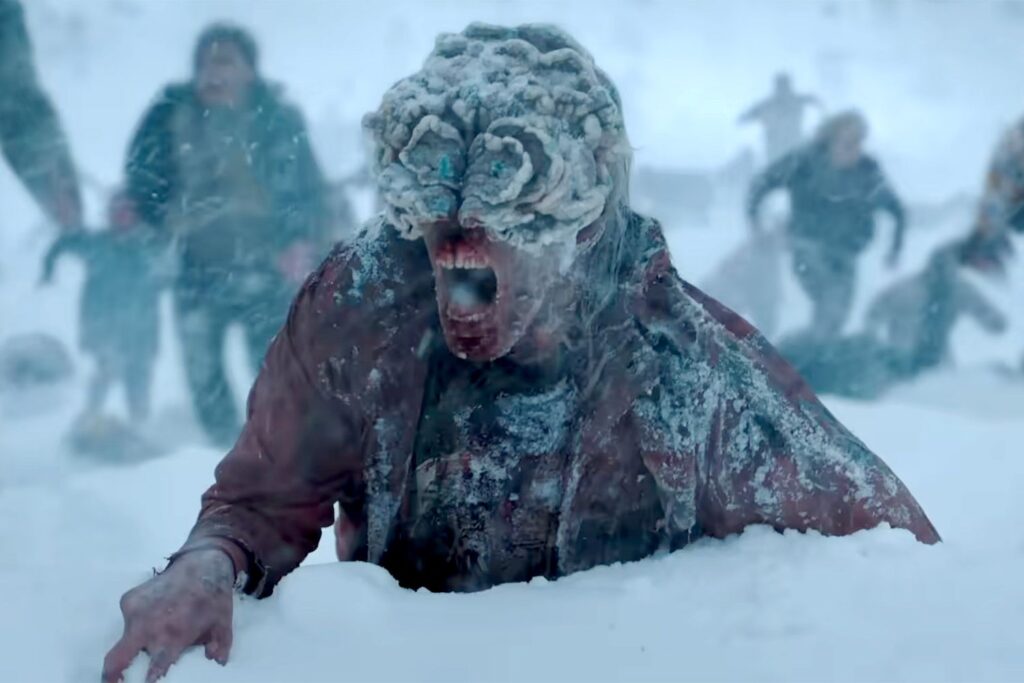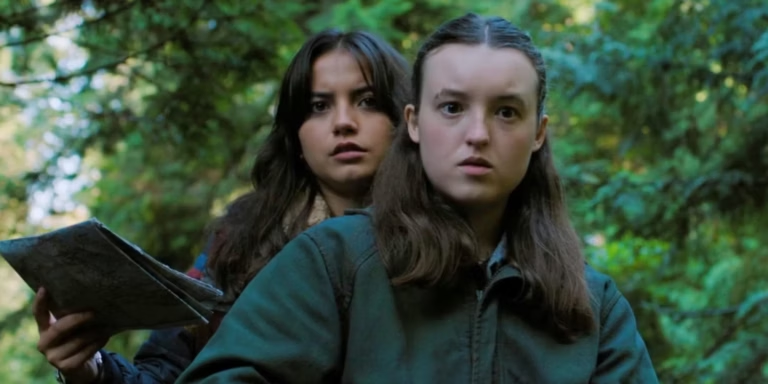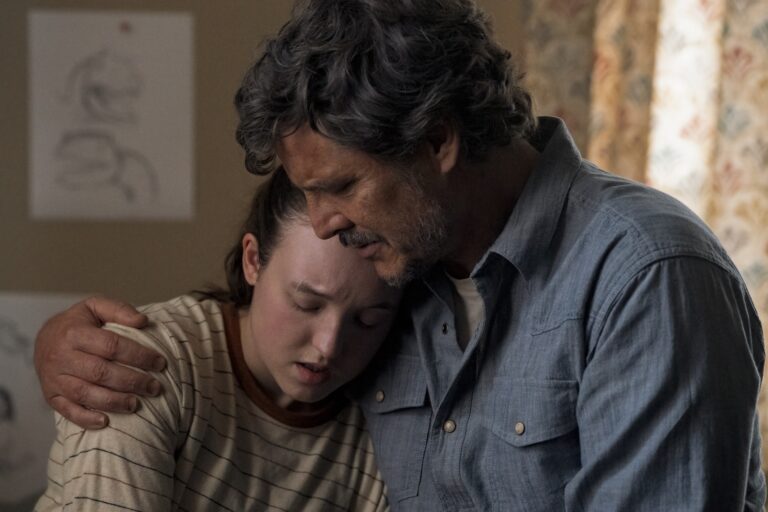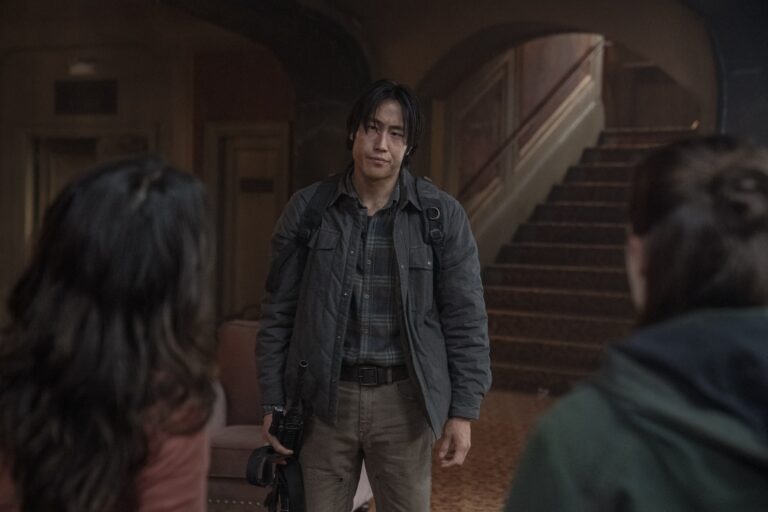Fans, brace yourselves. Season 3 of “The Last of Us” is charging full force into new, monstrous territory — with a wild crew of Infected in tow. But the burning question? How does the show keep things looking so stomach-churningly real, even as the monsters evolve? The answer is a gonzo cocktail of old-school makeup magic and sleek digital wizardry. Let’s crack open the toolbox and see what makes those nightmare-fueled creatures tick.

Let’s Get Real: Prosthetics and Monsters You Can Touch
First up: practical effects. Forget the days of ketchup-blood and rubbery masks — these effects artists mean business. Barrie Gower may have gotten famous painting the Night King’s face blue, but his work here turns actors into fungal nightmares. The prosthetic work on Season 1’s Clickers left no jaw un-dropped: each fungal plate, each swollen eye stalk, got sculpted, cast, painted, and then glued to an actor’s face for hours.
Gower’s team doesn’t just slap on latex and call it a day. They collaborate with directors, storyboard artists, and even the show’s movement coach. That way, the monster doesn’t just look gross — it moves in a believably inhuman way, too. Every twitch, every spasm, every thrash through a crumbling wall — the credit doesn’t just go to computers. There’s a person sweating buckets under piles of prosthetics, snarling and rending in real-time.
But here’s the snag, and the genius of it: Sometimes prosthetics just aren’t enough. The Bloater — the muscle-bound, tank-like enemy — started out as a practical creation. But, as anyone who watched that wild Kansas City sequence knows, the final beast was massive. How do you make something that size charge across a set, hurling people around, and look like it weighs half a ton? Enter CGI, elbowing its way into the mix.
CGI: The Invisible Hand That Cranks Up the Terror
Here’s the truth: when practical runs out of road, digital artists at places like Wētā FX fire up their computers. But these folks don’t just slap a CGI monster onto the screen and call it done. They scan the actual prosthetic suits made by Gower’s team — every crack and bulbous lump. It’s all about layering. They lay the digital work right over the practical base. That way, fans never get yanked out of the illusion. That’s the trick: even as technology cranks up the horror, the scene still feels sticky and real.
Case in point: those infamous fungal tendrils. You remember the scene — writhing vines flowing from an infected’s mouth, eager to latch on. No way to make those out of foam latex. The show’s VFX crew, led by Alex Wang, designed them digitally — matching their moves to the actor’s jaw clenching. So when the tendrils squirm and wrap around their victims, you get chills. Because you believe it. The computer never upstages the craftsmanship underneath.
Now Enter: The New Monsters in Town
Season 3 promises to upend our nightmares with more than just Clickers and Bloaters. Fans, meet the shamblers and stalkers. Naughty Dog’s games gave these creatures wild personalities. But adapting them for TV means more than grabbing the game files and hitting “print.”
Let’s break it down:
- Shamblers: Think of them as the Infected’s xenomorphs — bloated, dripping, puffed up with acidic spores. Each step leaves a steaming puddle. In the games, they spew clouds that spell doom for anybody breathing nearby.
- Stalkers: These freaks lurk in the in-between — creepier than Runners, not quite Clickers. Watching. Waiting. Lunging out of the dark.
Here’s where things get interesting. In the HBO show, Cordyceps infection doesn’t use airborne spores as the games do. Instead, it’s all about tactile, writhing tendrils. So, if shamblers specialize in explosive clouds, how does the series keep to its biology rules?
Tweaking the Recipe: Creative Changes for Season 3
The show’s creators, including co-creator Craig Mazin, faced a puzzle. They couldn’t simply recreate the games’ “gas attack” Infected. Instead, they brainstormed new methods for shamblers to spread dread. According to CBR, designers are developing hybrids — maybe these new monsters will erupt with a mesh of tendrils or ooze a caustic goop. The goal? Stay terrifying, but keep the science grounded in the show’s world.
And for stalkers, the focus remains on blending shadows, prosthetics, and digital trickery. These beasts don’t just need a cool monster suit — they need a movement style that hovers between awkward human and uncanny fungal. The makeup team sculpts intricate prosthetics, letting actors move with a staccato, jittery gait. Later, VFX sweeps in to exaggerate the fungal threads wriggling under their skin or tweak their eyes in post.
How It All Comes Together: Combo Moves
Here’s the jaw-dropping bit: this isn’t just a parade of monsters. It’s a ballet, with practical and digital teams swapping the lead, scene by scene.
- The prosthetics artists create the physical suit — the gnarled face, the split-open jaw, or the layer of cracked Cordyceps plates. Every seam gets painted, every hair plugged.
- Stunt actors wear the gear, bringing a fluid awkwardness only real humans under real weight can pull off.
- Cinematographers light them like real, flesh-and-blood villains. Shadows, flashlights, and flickering fires pick out all that grotesque detail.
- On top of it, digital artists build enhancements — maybe extra fungus pulses, or digital tendrils shiver along forearms.
- The score (let’s not forget composer Gustavo Santaolalla!) surges and falls, priming us to either peer closer or look away in horror.
But, every step, the teams stay in sync. When prosthetics need stretching or sprouting, CGI handles the handoff. When digital needs fleshiness, practical supplies it. Wētā FX, now with credits from “Avatar” to “The Last of Us,” leads this handiwork (Wētā FX article). Their artists use real set scans and lighting references. That way, the beast never looks pasted in — it just “is.”
The Grounded Feel: Why It Still Freaks Us Out
All this crossover effort pays off because the show never lets us “see the seams.” Scenes shiver with tension because the horror hugs close to reality. Take away the prosthetics, and it’d all float away in a cloud of digital goo. Overload it with CGI, and the monsters look like cartoon baddies. The showrunners, who sweat every close-up fungal flake, know the secret: If the light bounces off latex and sweat, fans feel queasy — and that’s the gold standard.
One brilliant example: Season 2’s flashlights and darkness. When the actors swept their beams across a Clicker, the makeup grabbed and scattered light. Every fungal plate threw a real shadow. It’s these touches, plus that nervous, half-glimpsed movement in the background, that twist the atmosphere until it breaks.
Social Buzz: What Fans — and Cast — Are Saying
Check the fan chatter on Reddit, Twitter, and fan blogs: everyone’s buzzing about how real these new monsters look. The behind-the-scenes photos teasing stalkers drew all-caps excitement, especially with cast and crew hyping how “nasty” and “hardcore” the new designs get (TV Insider gallery). Even the actors say the makeup gets under their skin — literally and emotionally. Between takes, some joked the set “smelled like mushrooms and pure anxiety.”
Looking Under the Bed (and Forward to Season 3)
So what’s next? The production teams are tuning up their blend of old-school rubber monster and cutting-edge pixels, aiming to make shamblers the stuff of sleepless nights. And they’re teasing that stalkers might not even need dialogue. Sometimes, the creepiest thing in the room is just the sound of heavy breathing in the dark.
Bottom line: every scream, every shudder, is hard-won. The monsters of “The Last of Us” don’t just stagger out of a computer — they claw their way through makeup trailers, mo-cap studios, and hours of heart-stopping teamwork. No cheats, no shortcuts, no skipping the scary parts. And that, friends, is the real magic under all that fungus.
Ready or not, Season 3 is set to infect your imagination all over again. Sleep tight!




